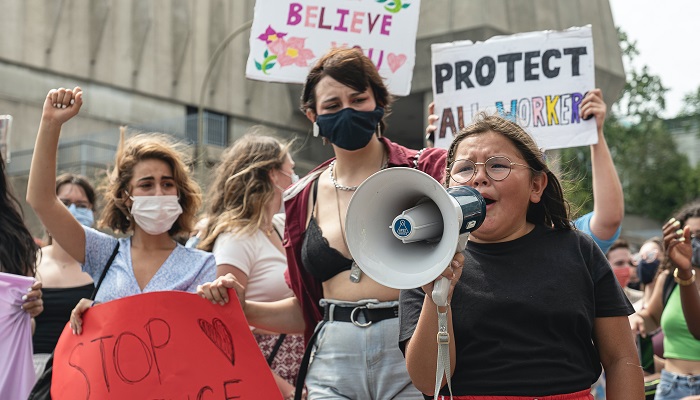
Women play a crucial role in society, yet they have often been overlooked throughout history. Nevertheless, women have taken organized stands through women’s rights activism and solidarity to combat gender disparities and break societal norms.
Women’s hard-won battles and the ongoing fight for freedom and equality have even earned them an international day to recognize their strengths and honor their achievements.
People around the world celebrate International Women’s Day on March 8. Here are five historical United States gender rights battles that deserve remembering on that day.
1. Equal Credit Opportunity Act of 1974
President Gerald Ford signed the Equal Credit Opportunity Act (ECOA) into law on October 28, 1974. This made it illegal for creditors, banks, financial corporations, retailers, and credit unions to discriminate based on sex, age, religion, marital status, race, or nationality.
Before the ECOA, a single, divorced, or widowed woman who wanted to open a credit card needed a man to co-sign for her. However, the new law prevented financial institutions from withholding credit cards from female applicants. This gave women greater independence and access to money.
2. Roe v. Wade
One of the most controversial landmark decisions in women’s history was Roe v. Wade. The Supreme Court decision passed in 1973. It gave women the right to seek an abortion during the first trimester of pregnancy and have the procedure with limitations during later trimesters.
Women’s right to autonomy over their bodies is something to celebrate. And when an experienced doctor performs it, abortion is safe and effective over 99% of the time. Yet, today’s contentious political climate continues to thrust Roe v. Wade into the spotlight and in some states, abortion and other reproductive rights are under attack and being taken away. For this reason, everyone must stay informed and get involved in preserving these crucial gender rights.
3. Violence Against Women Act of 1994
In the “Me Too” and “Times Up” era, there’s been a greater focus on sexual violence against women; however, these issues aren’t new.
President Bill Clinton signed the Violence Against Women Act (VAWA) of 1994 into law. It addresses sexual, dating, and domestic violence and stalking. Upon its passage, the VAWA presented state and federal grant programs to address this. It also opened new shelters and resource centers to investigate violence against women.
The government has reauthorized VAWA several times with more robust protections for women. In 2021, the House of Representatives approved changes to the VAWA, even though 172 Republicans voted against its reauthorization.
4. Family Medical Leave Act of 1993
The Family Medical Leave Act (FMLA) of 1993 allows employees to take 12 weeks of unpaid time off for various medical situations without losing their jobs.
Working moms benefit the most from this legislation, gaining protections from unemployment after birth or adoption. The FMLA was also a win for first-time moms dealing with postpartum depression who need time to adjust to their new lifestyles.
Seeing that women are typically caretakers, FMLA also allows employees to take time off to help family members with serious health complications or care for their own conditions.
Eligibility requirements for FMLA include working for an employer for a year at minimum or working 1,250 hours in 12 months.
Unfortunately, many women cannot take the entire three months of unpaid maternity leave. This is because the U.S. remains one of a few countries that doesn’t give paid parental leave to new parents.
5. Women’s Right to Vote
Without the ability to voice their opinions and vote for the politicians and social issues that matter most, it’s possible that many of the gender battles people have fought and won would never have happened.
Lucretia Mott and Elizabeth Cady Stanton pioneered the women’s suffrage movement after an 1840 conference for the World Anti-Slavery Congress in London. They were unable to participate due to sex discrimination.
After generations of women’s suffrage supporters spent decades marching, lobbying, and writing about the freedom to vote in political elections, Congress passed the 19th amendment on June 4, 1919. Congress later ratified it on August 18, 1920.
Worldwide, women have collectively broken discriminatory barriers based on sex, creating greater equality, diversity, and inclusivity. In the U.S., women continue to fight gender disparities and build a more equal political, social, economic, and cultural way of life for future generations.
Feature Image by Mélodie Descoubes on Unsplash
Without the ability to voice their opinions and vote for the politicians and social issues that matter most, it’s possible that many of the gender battles people have fought and won would never have happened.